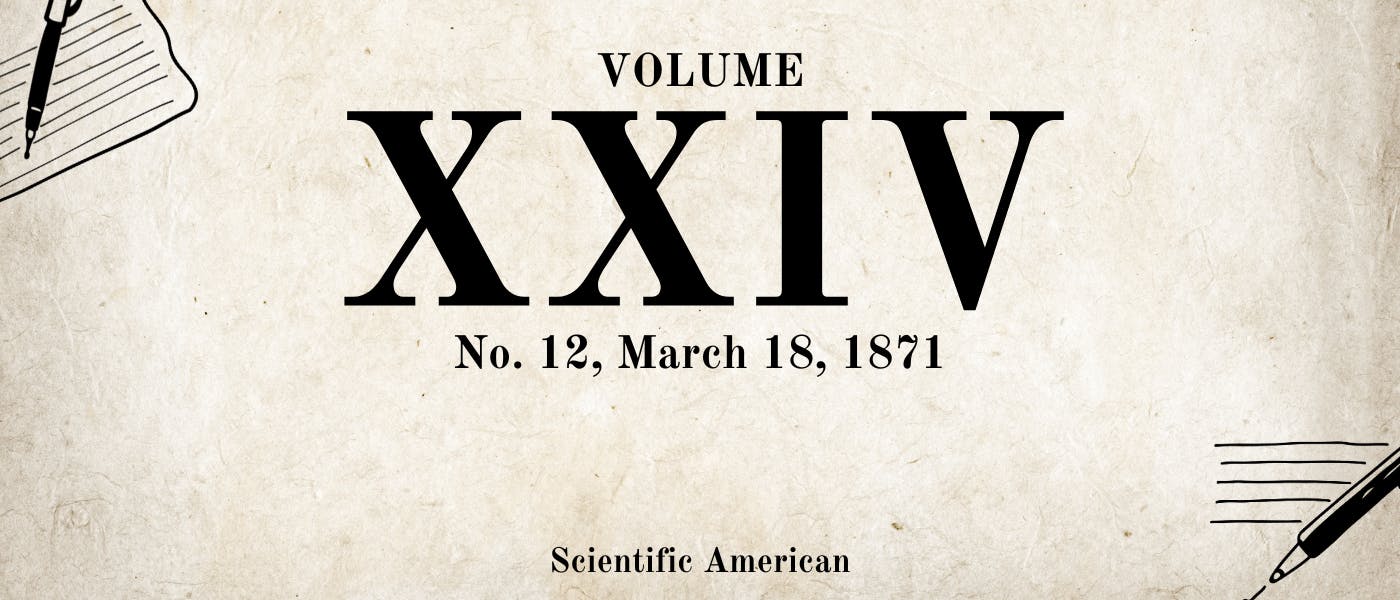Scientific American, Volume XXIV., No. 12, March 18, 1871 by Various, is part of the HackerNoon Books Series. You can jump to any chapter in this book here. The Hartford Steam Boiler Inspection and Insurance Company.
The Hartford Steam Boiler Inspection and Insurance Company.
The Hartford Steam Boiler Inspection and Insurance Company makes the following report of its inspections in January, 1871:
During the month, there were 522 visits of inspection made, and 1,030 boilers examined—853 externally and 363 internally, while 106 have been tested by hydraulic pressure. Number of defects in all discovered, 431, of which 163 were regarded as dangerous. These defects were as follows: Furnaces out of shape, 24—3 dangerous; fractures, 47—25 dangerous; burned plates, 29—14 dangerous; blistered plates, 54—10 dangerous; cases of sediment and deposit, 97—18 dangerous; cases of incrustation and scale, 70—24 dangerous. To show how little attention is paid to the internal condition of boilers by incompetent engineers, we copy the following from a letter of one of our inspectors:
"In one tubular boiler I found sediment in the back end, eight inches deep, and extending forward more than four feet. It seemed to be an accumulation of fine scale cemented together, so that it was necessary to break it up with a hammer and chisel before it could be removed. The engineer said he had cleaned the boilers only three days before, and objected to my making another examination. This is one of the many cases we find, where the proprietor trusts everything about his boilers to his engineer, supposing him to be reliable."
With such accumulation of sediment and deposit, is it any wonder that sheets are burned? A careful engineer will understand, if the feed water be impure, that he must blow down two or three inches every day, or oftener, that the sediment may be removed as it accumulates, and then an internal examination once in two weeks, or once a month, will insure a clean boiler.
Cases of external corrosion, 26—10 dangerous; cases of internal corrosion, 17—5 dangerous; cases of internal grooving, 28—11 dangerous; water gages out of order, 50; blow-out apparatus out of order, 15—7 dangerous; safety valves overloaded, 40—12 dangerous; pressure gages out of order, 54—6 dangerous, varying from -15 to +8 pounds. (We have found several gages entirely ruined from being frozen). Boilers without gages, 4; cases of deficiency of water, 5—1 dangerous; broken braces and stays, 31—7 dangerous; boilers condemned, 2—both dangerous.
Two engineers were found drunk on duty, and promptly discharged. There were 9 serious explosions during the month, by which 99 persons were killed, and 6 wounded. Eighty-seven of the killed were passengers on the ill-fated steamer H. R. Arthur, on the Mississippi River. Many were drowned, and some burned, but the origin of the calamity was the bad quality of the boilers, which a careless management was unable to detect. The upper and fore part of the boat was blown away by the exploded boilers, and, to add to the horror, what remained took fire.
None of these exploded boilers were under the care of this company.
Five ore-roasting furnaces are in full blast in Nevada.
About HackerNoon Book Series: We bring you the most important technical, scientific, and insightful public domain books.
This book is part of the public domain. Various (2006). Scientific American, Volume XXIV., No. 12, March 18, 1871. Urbana, Illinois: Project Gutenberg. Retrieved https://www.gutenberg.org/cache/epub/19180/pg19180-images.html
This eBook is for the use of anyone anywhere at no cost and with almost no restrictions whatsoever. You may copy it, give it away or re-use it under the terms of the Project Gutenberg License included with this eBook or online at www.gutenberg.org, located at https://www.gutenberg.org/policy/license.html.

